It’s a Wrap
I have a few of these Stanley 78s and surprisingly the handles all seem to me to feel different. in my hands. I have a couple that have very smooth castings and so too the painted finish. Some however feel quite rough and somehow cold to my touch in that they seem uninviting to work with. In cold workshops they feel cold to handle and one year I remembered that my father had a wrapped a coffee pot handle with string to work as an insulator to stop burns. I did exactly as he did and it worked fine.
Two things work well to improve the handling of the plane. One, the insulation factor means that in winter in a cold workshop you don’t have need of warming up the handle by friction in use every time you pick it up and put it down. Two, it feels remarkably comfortable and less slippy in the hand.
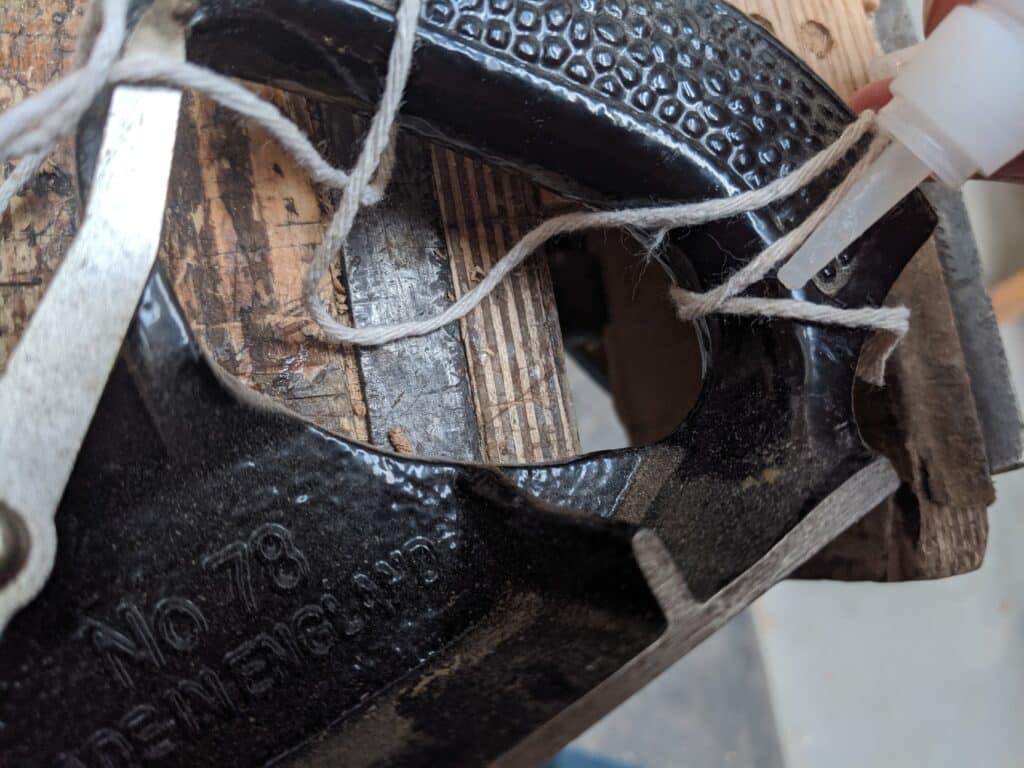
I used superglue to start with so that I could pull the string tight as I wrapped each circuit. It takes about four yards of string but not all string is the same thickness so it can take more or less.
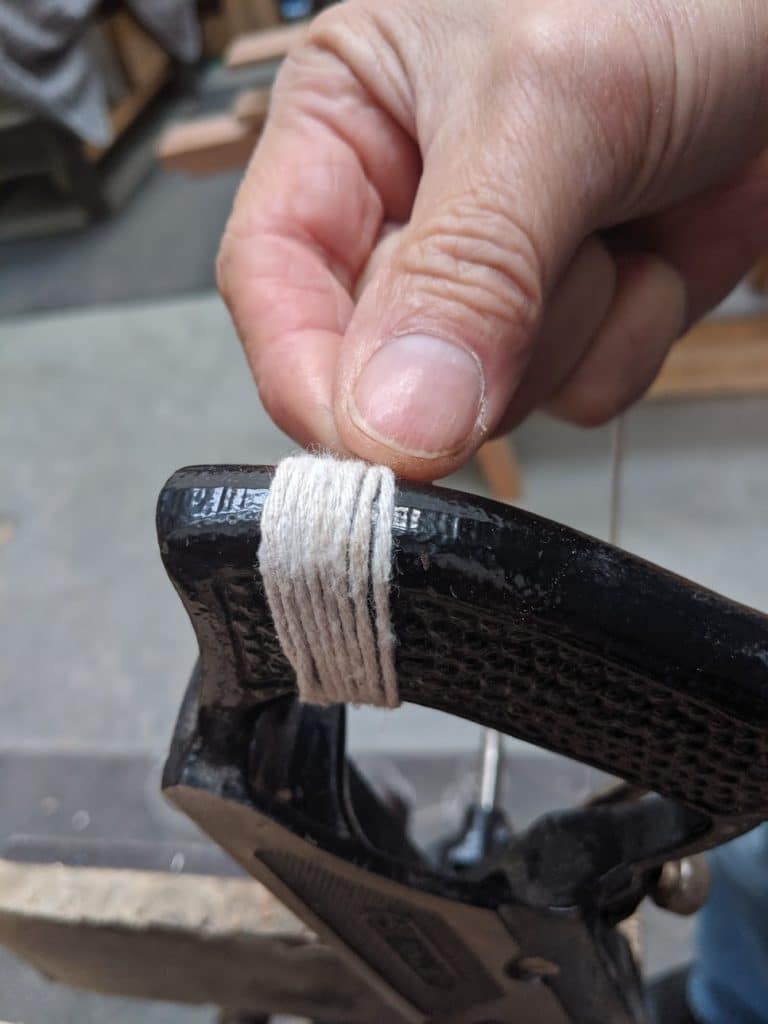
Once completed I used superglue to seal the concluding wrap, knowing that the next stage would glue each wrap permanently in place.
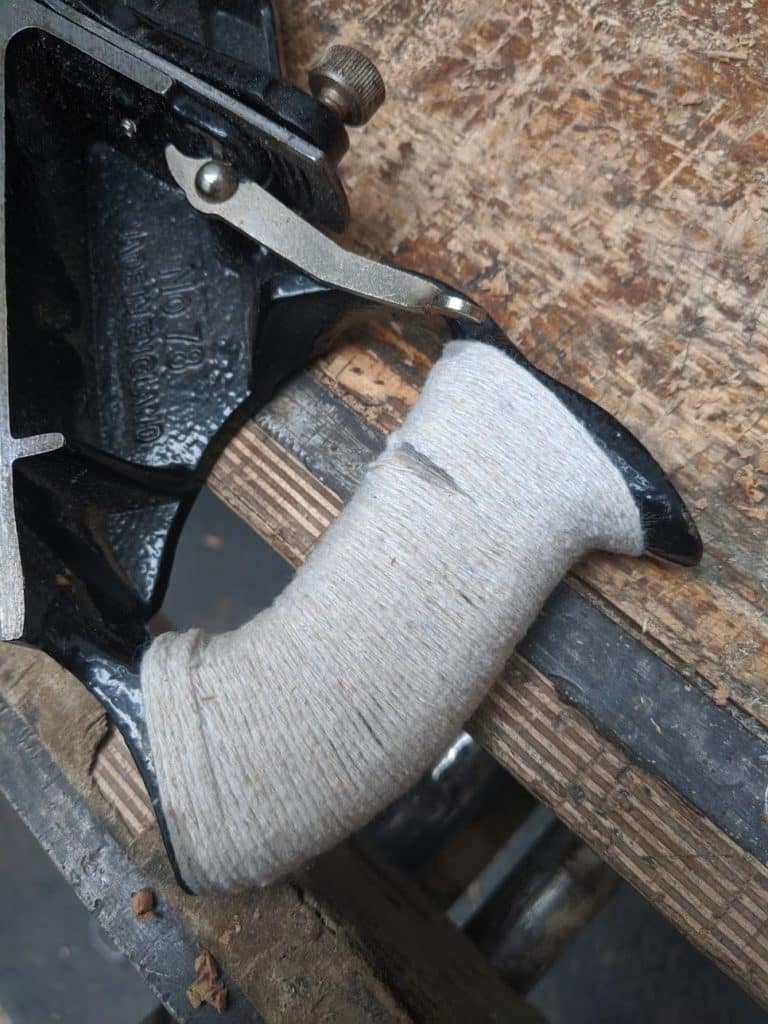
A heavy coat of shellac is quickly absorbed into the string fibres. Leave overnight to fully harden and cure.
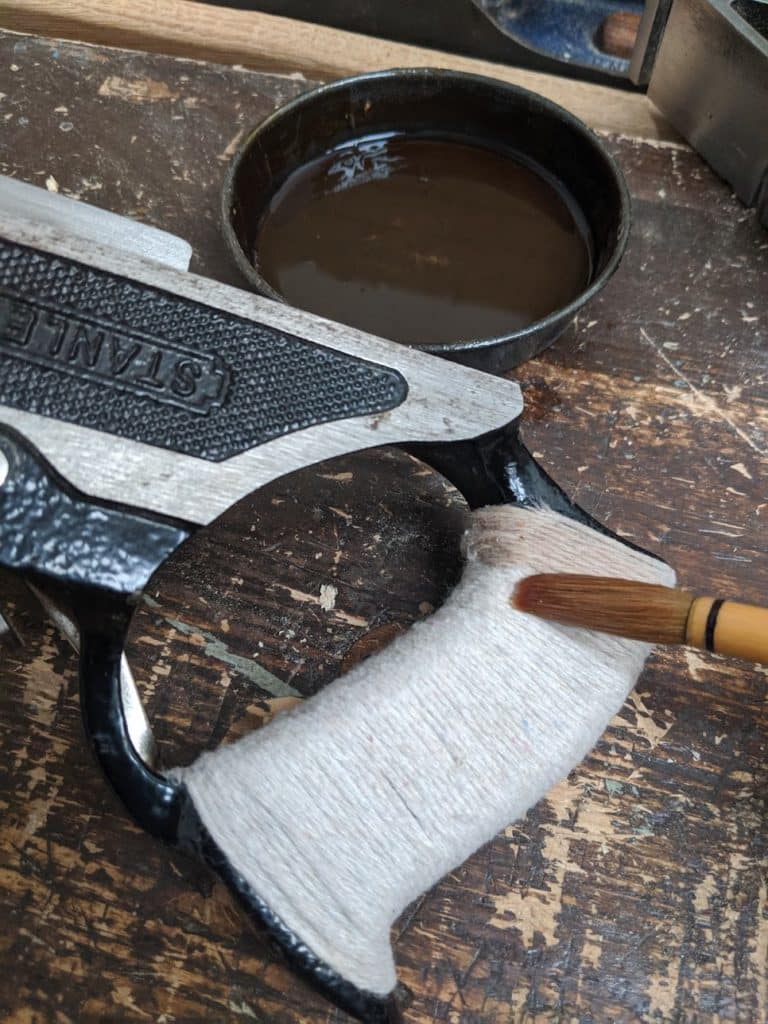
I used 150-grit sandpaper to even out the surface.
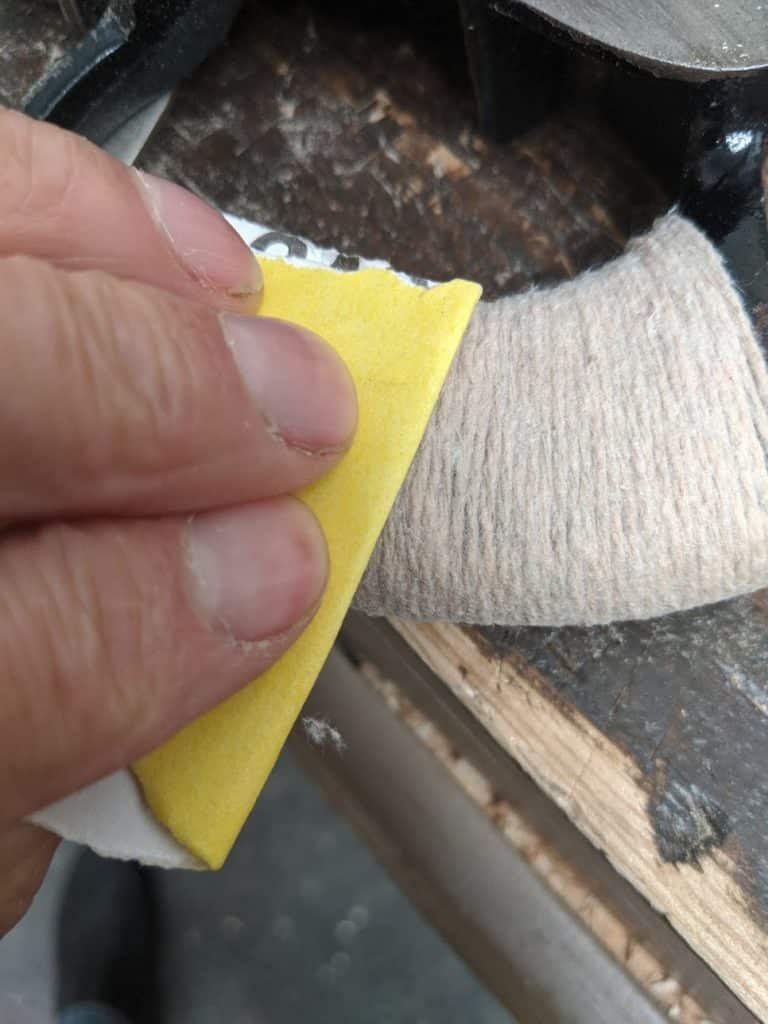
Two additional coats of shellac brushed on and left to harden gave sufficient adhesion of the string to the handle and built up the coating to fully protective level. A coat of wax furniture polish finishes the whole.


Have wrapped many handles, saws, hammers, wrenches etc., with string, cord and even rope to provide a better grip and in some cases to enlarge the handles to better fit my hand. I use the line end whipping method, to secure the wrap and have not shellacked or waxed the windings. Haven’t thought of wrapping the #78 handle. Might try it on mine. My metal mounding plane has wood scales on the handle. Wrapping with cotton string might improve that grip. Might try that.
Excelente idea para agrandar el grosor del mango del cepillo tengo un Narex #4 que su mango es un poco delgado tomando en cuenta que es plástico eso le dará más cuerpo para un mejor agarre además de fortalecerlo como tal.
Muchas gracias buena idea saludes desde Costa Rica.
In a warm climate my palms sweat. I did this recently to the handle of my mallet. What a difference. So go at it fellow wood workers.
I would also have used the line end whipping method.
Although with the glue and shellac it will not unwind easily and with Paul’s method there is no extra thickness due to the two strings under the wrapping. Not to say that one will necessarily feel those two strings.
Everybody should learn to tie a few knots. I have seen someone ( on LAP) proposing to use garden-hose-clamps to make a polissoir instead of constrictor knots and end line whipping.
Sylvain
I leave mine as manufactured. The handle never bothered me.
JIM
Another suggestion might be to try hockey tape. Rob Cosman uses it and I have seen other folks use it as well. It proves a good grip and I am sure it would help in the cold as well.
There are a lot of options, some that might be a lot better in some regards, available, but then there is something about a solution like this.
You could buy some stuff that act as play-doh, then hardens over night. You would get a perfect fit to your hand that way. Wrap the handle with the special play-doh, grip it and then refine the surface somehow. A day or two later, and your handle is finished.
But how long will it last? It is also plastic. Of which we should use less.
A cotton string secured with shellac. Environmentally sound and the result is a good grip. I love it!
I have never thought about this if Mr. Sellers did not post about it. Thank you! It is important to bring the old solution into the future. One might use different materials, but the idea should survive. In some cases we do not need to reinvent the wheel, although we may add another design to the rims…
This can be used in another way: use rougher rope, secure only the ends to keep the rope in place. Use line end whipping method if preferred. Should give a very good grip on handles that otherwise might be a tad slippery.
Good one Paul. The materials can be chosen to suit – string, bandage, denim (my father used putty); the binding too – glue, epoxy, whipping. (People who use/ make knives usually have many solutions for grips.) What matters is that if tools aren’t comfortable then make them so – they should be inviting not offputting.
The 78, that old saying, springs to mind, about kicking your self. I had one of them, it was my father’s, it didn’t have a blade, it layed around the garage for years. So I gave it to a local charity shop, two weeks later, when tidying up, I found the blade for the plain.
Very, very good idea and materials.
“I used 150-grit sandpaper to even out the surface.”
This combines a soft touch with a textured surface not as watertight as metal/plastic. It should ensure a nice grip.
Hi Paul, great method to increase grip and take the chill out of a metal handled tool! In your woodworking career is this a technique you’ve come across elsewhere? I have been woodworking for close to 40 years and its the first time I’ve seen this wrapping technique. I too use the 78 and if my garage/workshop temp is cool I’ll often throw on a pair of thin, modern day work gloves.
As I see it the string wrapping method is more preferable over tape. Somehow the tape seems just a bit tacky to me if you’ll pardon the pun. It also occurred to me that a leather wrapping carefully stretched to fit the handle and sewn on would be a nice long lasting covering warm to the touch. I thought of that because I also do leatherwork from time to time.
I have used the stretchy bandage material you get when you donate Blood. Works really well for about two years then the stuff begins to break down and leaves an awful residue. I have used it on twin screw clamps because the handles are too small and slick. The residue required mek to remove. String, shellac and wax is much better and permanent. Great tip! Thanks
My dad’s coffee pot lasted through four decades until my mum passed in her mid 80s.
My uncle used to put string like this around a lot of his garden tools.
Not for comfort. Turns out, it was the string that was holding them together!
Paul, I wish my Dad was still around. He would have enjoyed these conversations, and especially your videos, SO MUCH. One of the things I’ve especially appreciated are thoughts like this, on how to customize, even make, your own tools. That is taking craft to the next level.
When I bought several old chisels there were various damaged handles and some huge oversized handles for fairly slim blades . I changed the handle shapes with a groove all around to match where my thumb and bent middle finger would combine forces with the palm of my hand.This groove also works well when the handle is held further down . It feels much more natural and ergonomic .
If you have any spare plumbing parts lying around , the brass collars from compression joints make good sturdy ferrules. Just file them smooth if you want. The threaded part grips the handle well .
I saw an American YouTuber use bank line and gorilla glue to put a whipped grip on his axe.
I tried it on a carving axe and an adze and it certainly enhanced the grip on the tool. It did not look as elegant as your solution as the glue was not evenly coated but it did a job.
I have just purchased a new axe and a crook knife and I am thinking of whipping a grip on to them as I use gloves when I am spooning carving and the tool handles slip. I might however use your shellac technique rather than glue.
What a great idea! The concept of a cold morning is a bit foreign in sunny Brisbane, Australia but the insulation would work equally well for sweaty hands in my hot summer garage.
this is a good tip. I use my no 78 quite a lot and as my workshop’s a bit chilly in winter, the handle does feel very cold to the touch
however, I think I’ll use sports tape instead – the kind you use for tennis racquet handles, etc
I have used tarred seine twine (#30) to wrap various handles. It gives an excellent grip which requires no additional finish. It’s quite inexpensive and neat. I order it from a netmaker in Louisiana.